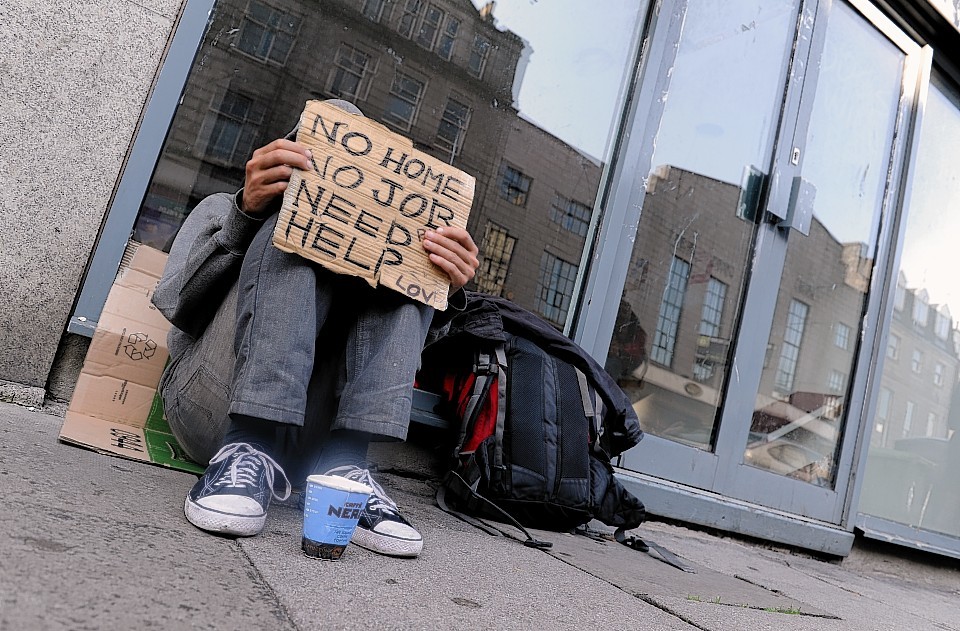The number of homeless people in Aberdeen and Aberdeenshire going to their local authority for help has fallen in the last 12 months.
Official figures published yesterday showed that 323 pleas for help were made in the city between April and June this year, down from 356 during the same period in 2013 – a 9% fall.
A total of 280 people applied for help in the shire this year in comparison to 310 last year – down 10%.
By contrast, the number of calls for assistance in the Highland and Moray council areas increased slightly.
Council bosses in the Highlands received 235 applications for help between April and June this year in comparison to 216 the year before – a 9% increase.
In Moray, 143 applications were received this year in comparison to 127 during the same period in 2013.
The figures showed a total of 8,917 applications for help were submitted to Scotland’s 32 councils between April and June this year in comparison to 9,619 the year before – down 7%.
Welcoming the overall decline in cases, Housing Minister Margaret Burgess said the Scottish Government was committed to supporting people of all ages who are homeless or at risk of becoming homeless.
“We have worked hard with local authorities to develop services that help prevent homelessness before it occurs and the figures released today show that we are all continuing to make progress,” she added.
“We will continue to work with our partners to prevent homelessness and improve outcomes for households experiencing difficulties.”
But Labour social justice spokeswoman Jackie Baillie said the figures “leave little to celebrate”.
“The Scottish Government has failed to make sufficient progress, especially in the number of people living in temporary accommodation which has fallen by only 2% in the last quarter,” she added.
“More needs to be done, and the Scottish Government’s continued cuts and financial pressures on local authority budgets are making a difficult situation a desperate one.”
Andy Young of The Scottish Federation of Housing Associations said: “Strong partnerships between local authorities, housing associations, the private rented sector and the third sector are vital, while local flexibility is a major strength of the current arrangements for housing homeless people.”
